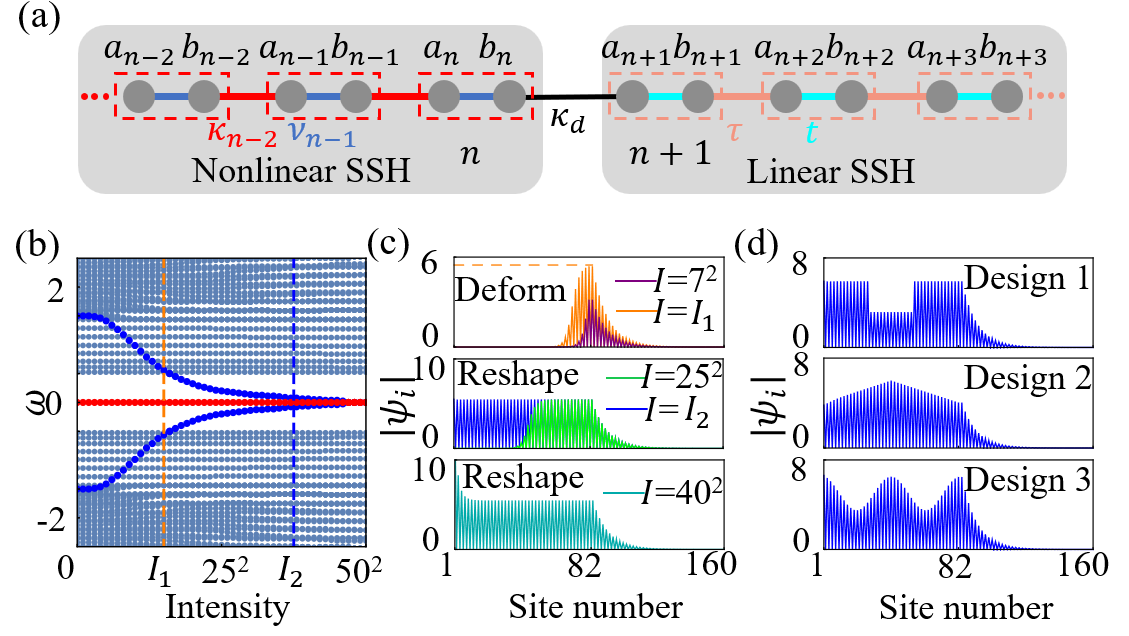Arbitrarily Configurable Nonlinear Topological Modes
Professor Xiao Meng's team from Wuhan University, in collaboration with Associate Professor Wan Duanduan's team, has pioneered research on nonlinear topological modes. They proposed a novel concept of arbitrarily configurable nonlinear topological modes, and related results were published in Physical Review Letters under the title “Arbitrarily Configurable Nonlinear Topological Modes”. The corresponding authors of the paper are Professor Xiao Meng and Associate Professor Wan Duanduan, with the first author being Bai Kai, a doctoral student at Wuhan University. Graduate students Jia-Zheng Li, Tian-Rui Liu, and Liang Fang also made important contributions to this work.
Topological modes are known for their robustness against disorder and defects, and they are widely used in fields such as optics, acoustics, and quantum physics. However, as inherited from the bulk-boundary correspondence, topological modes exponentially decay into the bulk and hence have limited capacity. The requirement of bulky topological materials and the limited available capacity of topological modes exhibit a bottleneck in potential applications. To overcome these challenges, we propose the concept of arbitrarily configurable nonlinear topological modes. This new type of mode not only inherits topological protection and localization features but also exhibits a unique configurability enabled by the nonlinear system, making the topological mode arbitrarily shapeable.

Figure 1. Arbitrarily configurable nonlinear topological modes.(a) Schematic of a tight-binding lattice.(b) Evolution of the nonlinear eigenfrequency spectrum.(c) Nonlinear topological wavefunctions under different intensities. (d) Designed topological wavefunction profiles.
This work is expected to open a new direction: "Designing topological mode profiles via nonlinear mechanisms." The proposed model demonstrates excellent topological robustness and can be extended to higher-dimensional systems. It offers a theoretical foundation and practical route for constructing a new generation of reconfigurable topological devices across a wide range of physical platforms.
Link:https://journals.aps.org/prl/abstract/10.1103/PhysRevLett.133.116602





